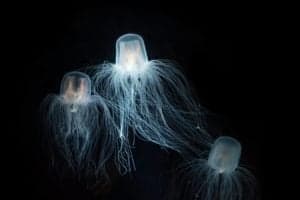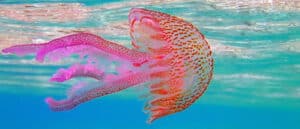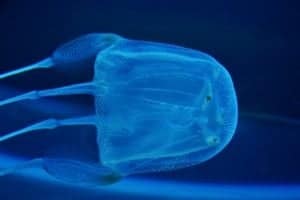The lion’s mane jellyfish, also known as Cyanea capillata, lives in the Arctic, Northern Atlantic, and Northern Pacific oceans’ freezing waters. They are found from Western to Southern Scandinavia to the English Channel, the Irish Sea, and the North Sea. They may float toward the Baltic Sea’s southwest corner. Additionally, Australia and New Zealand have jellyfish that may be the same species.
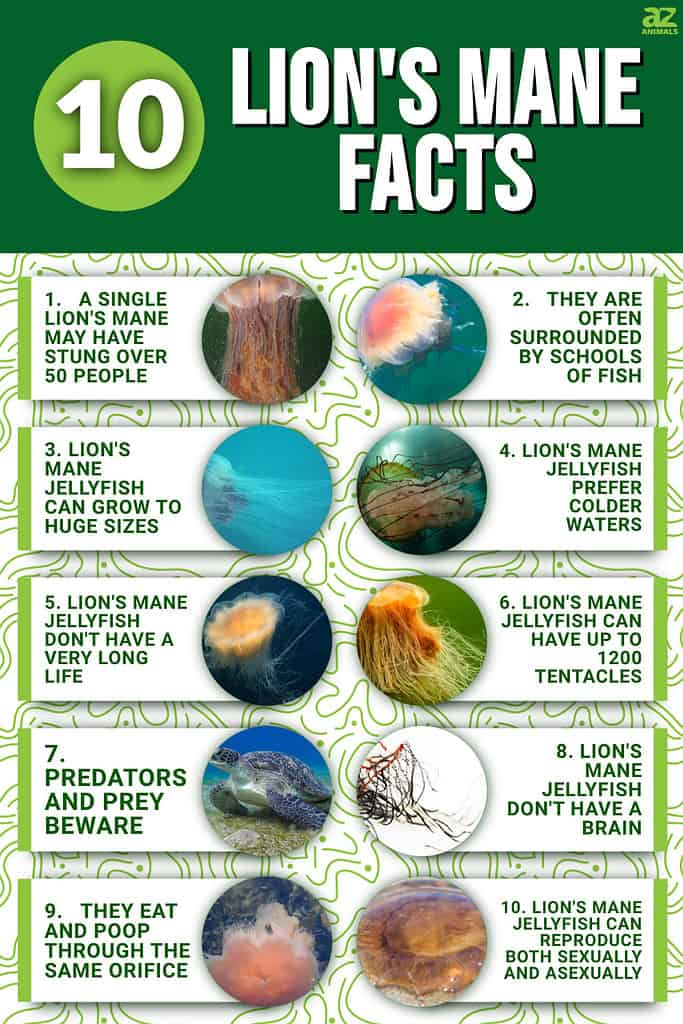
The largest specimen found off the coast of Massachusetts in 1865 had tentacles 36.6 m (120 ft) long and a bell 210 cm (7 ft) in diameter. Lion’s mane jellyfish live in east coast bays below 42°N latitude. Lion’s mane jellyfish use their stinging tentacles to capture and eat fish, zooplankton, sea creatures, and smaller jellyfish. Would you like to learn more? Keep reading to discover 10 incredible lion’s mane jellyfish facts!
1. A Single Lion’s Mane May Have Stung over 50 People
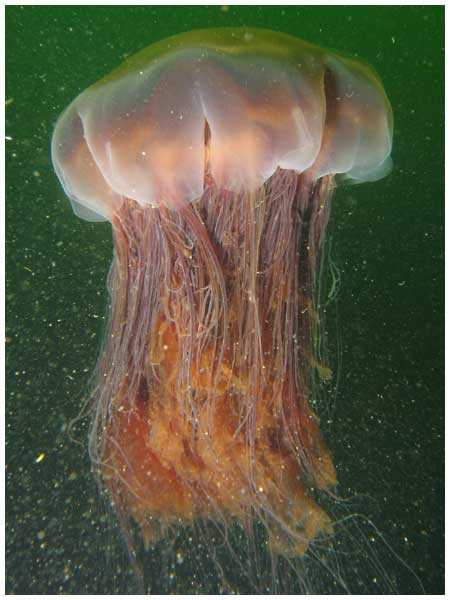
Lion’s mane jellyfish use tentacles to capture prey.
©Dan Hershman / CC BY 2.0 – License
New England beachgoers experienced a peculiar day on June 16th, 2010. On this day, 50-100 swimmers were stung in Rye, New Hampshire. Officials found a dead lion’s mane weighing 40 pounds at the site. This led authorities to believe they had apprehended the perpetrator.
Scientists hypothesized that the lifeless jellyfish may have caused pain even after death. Several large pieces could have drifted and contacted observers. It’s highly improbable that we’ll ever have 100% certainty.
2. They Are Often Surrounded by Schools of Fish
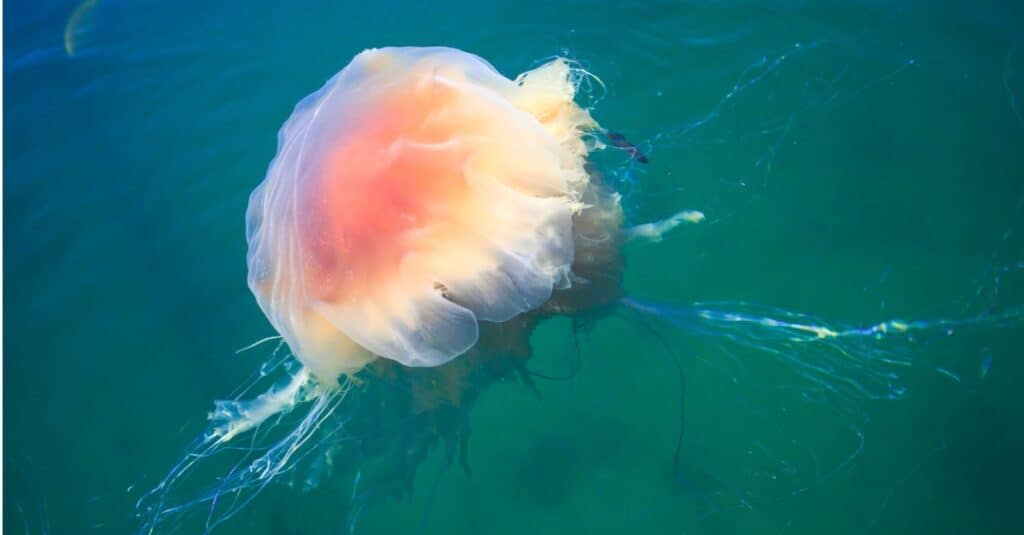
Lion’s mane jellyfish only have a lifespan of one year.
©iStock.com/Nikolay Tsuguliev
Fish of the genus Caranx eagerly seek out lion’s mane jellyfish and hover about their tentacles for protection, even though the invertebrate’s sting is harmful to smaller organisms (including other jellyfish). She says that the questions surrounding jelly biology are more numerous than the answers. On the contrary, kingfish will hide inside the stinging strands and feed on the leftover jellies until they are big enough to venture into the open ocean.
3. Lion’s Mane Jellyfish Can Grow to Huge Sizes
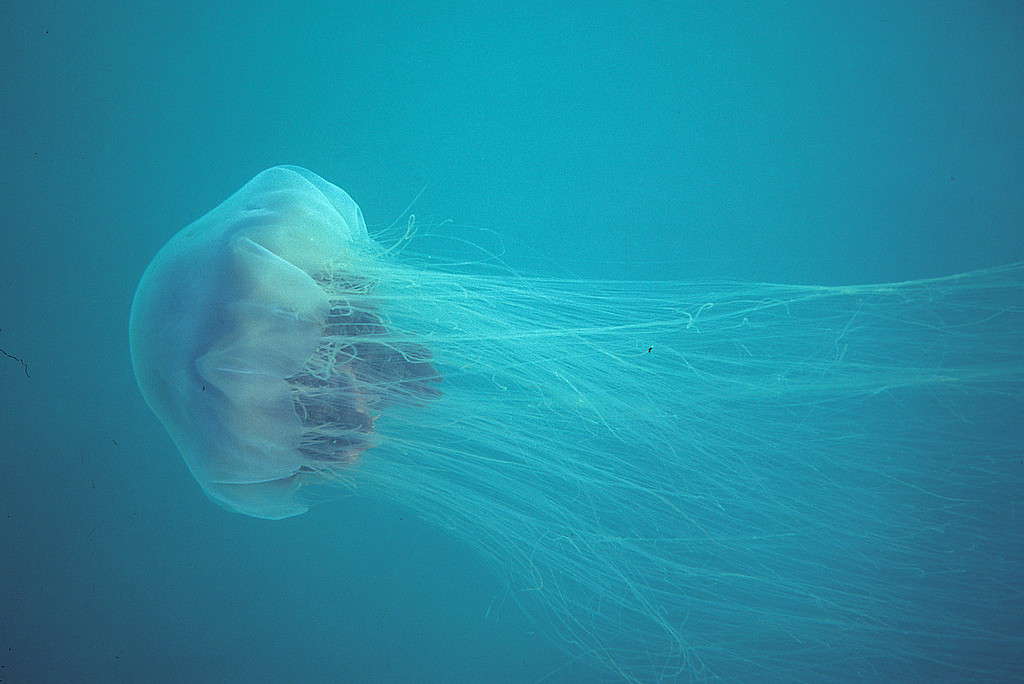
The lion’s mane is the largest species of jellyfish.
©Derek Keats / CC BY 2.0 – License
A lion’s mane jellyfish can reach a length of 120 feet! But don’t say that such a jellyfish is the world record holder for marine creature length. Scientists in the ocean have debated whether the saltwater bootlace worm, aka Lineus longissimus, which can grow up to 180 feet in length, merits the moniker. “Lion’s mane” is, however, the largest species of jellyfish. In 1865, the largest specimen ever found was unearthed off the coast of Massachusetts. Its tentacles stretched for a total of 120 feet, and its body measured around 7 feet across!
4. Lion’s Mane Jellyfish Prefer Colder Waters
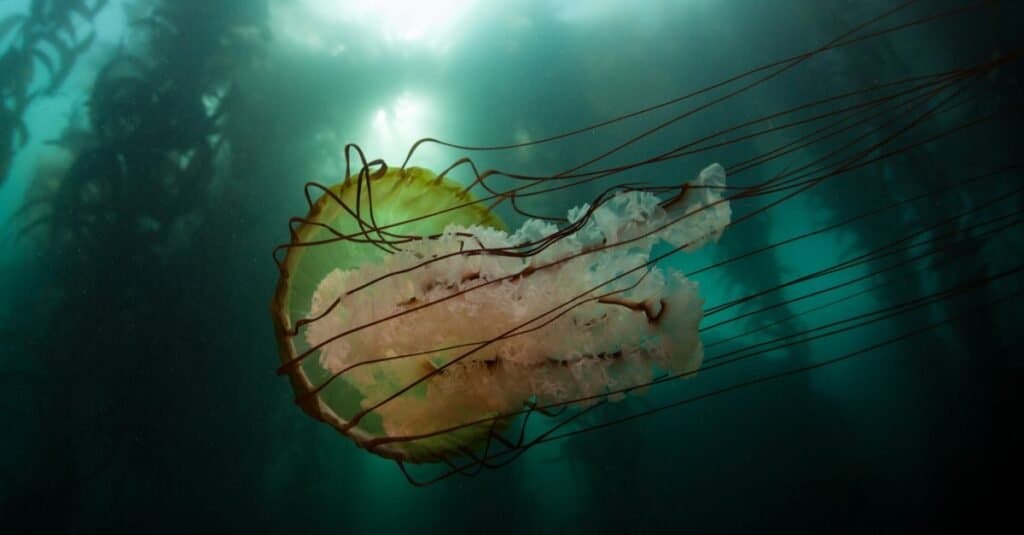
A lion’s mane jellyfish can grow huge with tentacles reaching over 100 ft long.
©Ethan Daniels/Shutterstock.com
From late November to early March, the Chesapeake Bay is home to the lion’s mane jellyfish, also known as the “winter jellyfish.” Since they are more at home in the frigid Arctic climate, they only travel south when the oceans are cold enough. Moreover, they rarely swim deeper than 66 feet, preferring instead to stay near the surface.
5. Lion’s Mane Jellyfish Don’t Have a Very Long Life
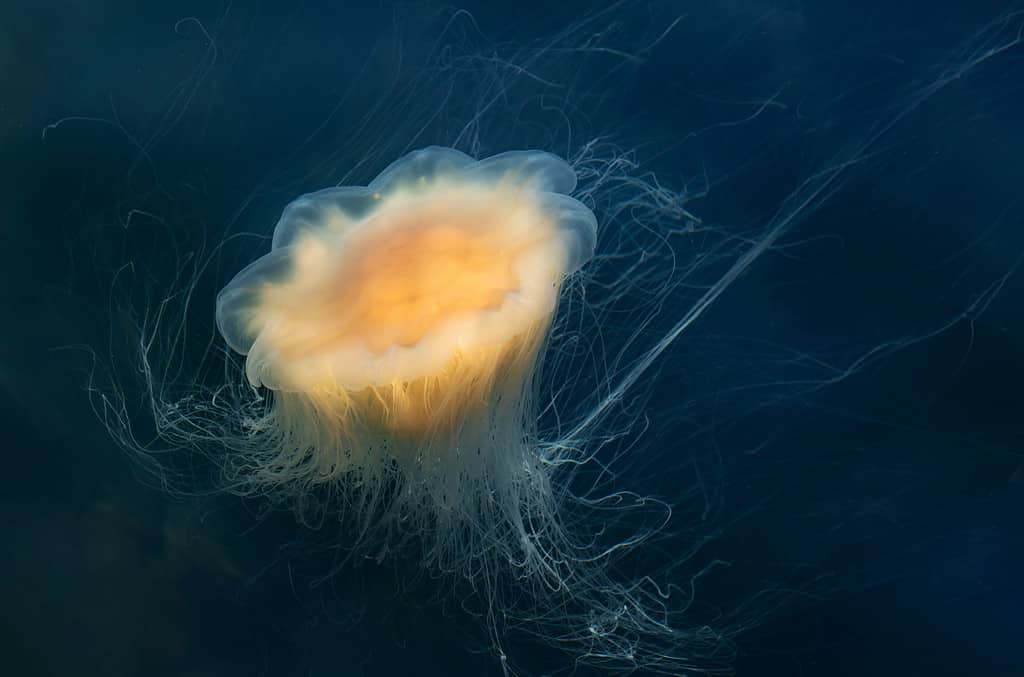
Lion’s mane jellyfish only live about one year.
©W.carter / CC0 – License
Jellyfish, known as lion’s mane, do not often live for very long. Lion’s mane jellyfish only have a lifespan of one year, but they can get as huge as blue whales. Therefore, they must be able to hunt and eat a significant amount of prey in that time to stay alive.
6. Lion’s Mane Jellyfish Can Have up to 1200 Tentacles
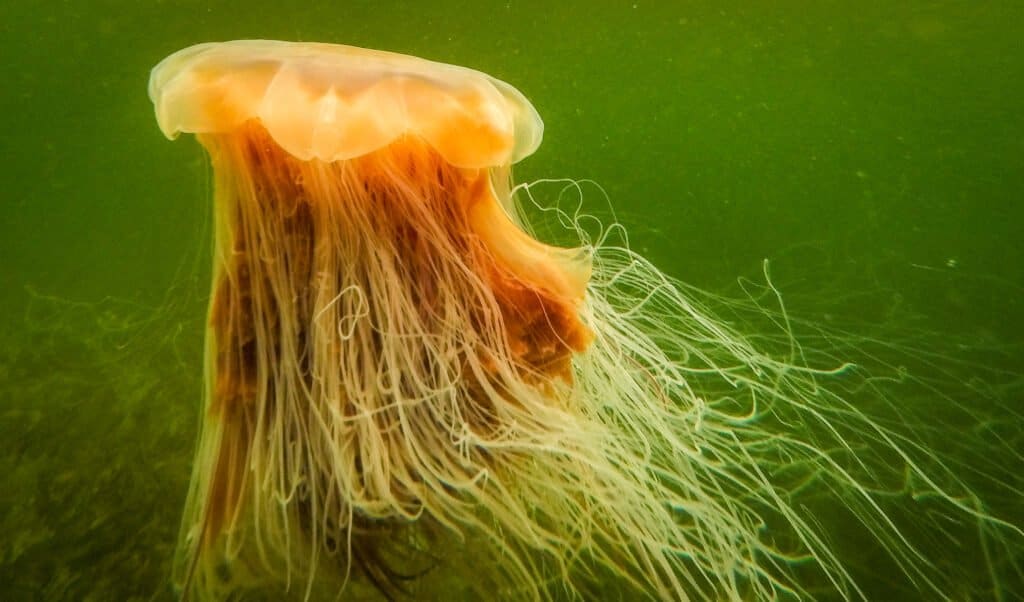
The lion’s mane is the world’s largest jellyfish.
©Sunart Media/Shutterstock.com
While some jellyfish can have hundreds of tentacles, the vast majority only have a few dozen hanging below their bell. There are eight groups of them, and each one has between seventy and one hundred and fifty individual tentacles.
7. Predators and Prey Beware
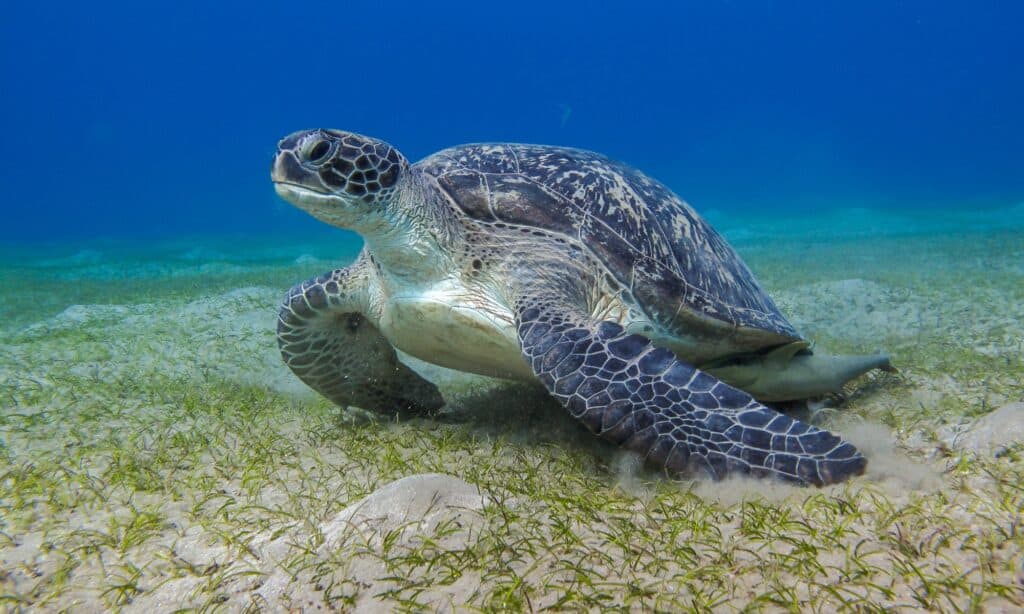
Leatherback sea turtles prey on lion’s mane jellyfish.
©iStock.com/YasserBadr_Beenthere
Leatherback sea turtles devour jellies off the coast of Canada. Oral papillae, which are in the throats of reptiles and point backward, help to move food toward the stomach and make it difficult for the animal to escape. To avoid predation, lion’s mane jellyfish must exercise caution.
8. Lion’s Mane Jellyfish Don’t Have a Brain

Without a brain or eyes, the lion’s mane relies on nerve cells to perceive and respond to potential threats.
©Sivonai/Shutterstock.com
Contrary to popular belief, these creatures do in fact have neurons, a ring of nerves within their “hoods” or “bells.” Without an actual brain or eyes, the Lion’s Mane must rely on its nerve cells to perceive and respond to potential threats, such as prey. Detectors in their bodies tell them if they are climbing or descending, approaching or fleeing the light. The jellyfish swims counter to the current.
9. They Eat and Poop Through the Same Orifice

The lion’s mane jellyfish only has one digestive opening from which it both eats and defecates.
©W.carter / CC BY-SA 4.0 – License
The mouth and anus of a jellyfish are in the same unusual opening. This means jellyfish expel bodily waste through the mouth.
10. Lion’s Mane Jellyfish Can Reproduce Both Sexually and Asexually
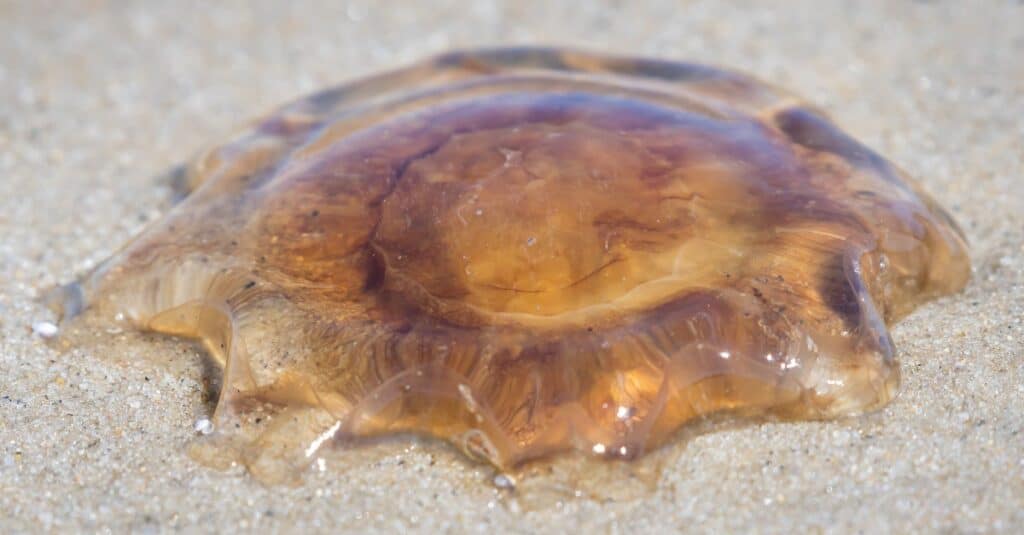
Lion’s mane jellyfish can clone themselves.
©MierCat Photography/Shutterstock.com
Jellies’ complex life cycles give rise to a wide range of morphologies. After maturing into a medusa, or “adult,” form, they can reproduce by releasing gametes. When anchored to the seafloor, animals in the polyp stage can self-clone asexually.
Jellyfish have an unusual life cycle because they reproduce sexually and asexually. While still in the polyp stage of development, they can make many duplicates of themselves, eventually becoming sexually active adult jellies.
The photo featured at the top of this post is © Martin Prochazkacz/Shutterstock.com
Sources
- Study.com, Available here: https://study.com/academy/lesson/lions-mane-jellyfish-habitat-facts.html
- Oceana, Available here: https://oceana.org/marine-life/lions-mane-jellyfish/
- Wikipedia, Available here: https://en.wikipedia.org/wiki/Lion's_mane_jellyfish
Thank you for reading! Have some feedback for us? Contact the AZ Animals editorial team.




